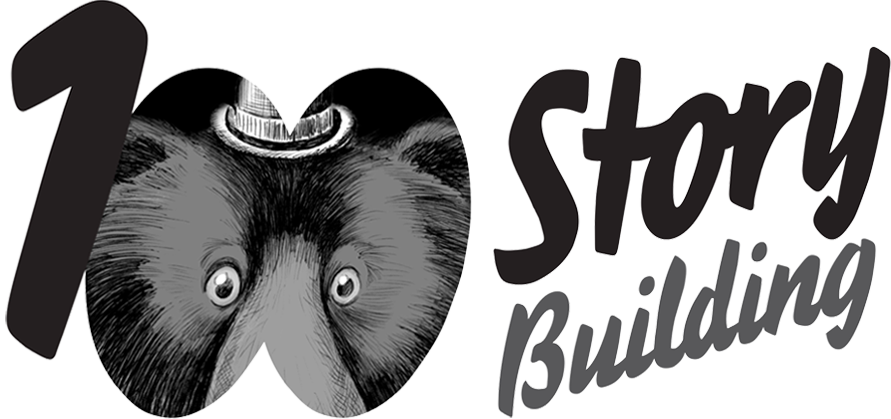Sparking Creativity with the 100 Story Building Approach
"I have never had a full class of students so excited about writing narratives," said a teacher at our recent “Geelong Spark” teachers’ Professional Learning project. It’s a pretty common reaction from teachers who see us work with their students.
Geelong Spark was one of our two-day teacher Professional Learning events. On the first day, all students from two schools participated in 100 Story Building workshops, while the teachers observed. On Day 2, we worked with the teachers to unpack what they saw in the workshop and explore ways they could integrate some of our facilitation techniques into their own teaching practice.
Over the years, we’ve developed a approach that encourages students’ creativity, improves literacy outcomes, and develops confidence and a sense of belonging. The “100 Story Building Method” as the Spark teachers started calling it, is at the core of our student-led programs and school workshops. We also show learning professionals how to use it in the classroom through our professional learning programs.
So what is our approach? It boils down to three key principles:
1. Using visual planning to capture thoughts and ideas quickly and without barriers.
We do a lot of drawing in our workshops, because drawing helps students (and adults) think, plan, and create. When we model activities for students, we ‘crowdsource’ ideas from the whole class and include every single idea in a big drawing at the front of the room. This encourages students to share ideas, because they can see their ideas being incorporated into the drawing in real-time. Visual planning is faster, more adaptive (and more fun!) than written planning. It helps overcome language and literacy barriers, and ensures that every student can participate and share their creativity.
2. Finding engaging ways to use students’ and teachers’ imaginations in different settings.
We use a lot of performance improvisation techniques when we run workshops. Each of our workshops has a story that we invite the students and teachers to participate in (“Today we’re going to space!” “Let’s find out what’s under this trapdoor!”). We are visibly engaged and excited about students’ ideas, with lots of eye contact and expressions of “Wow!” and “Cool!”.
But rather than just validating ideas (“That’s a cool dragon-snake!”) we ask questions that help students build on them (“That’s a cool dragon-snake! What do you think its scales are made of?”). This style of facilitation creates a heightened and excited energy. It invites students into a different kind of creative world where anything might happen, so that they can get onboard and become part of the adventure.
3. Making room for student voice and student agency by allowing students to make their own creative choices.
Everything at 100 Story Building is designed to foster student agency. We celebrate every idea a student comes up with (yes, even poo jokes 💩) because if children and young people are brave enough to put up their hands, we should be brave enough to include their ideas. This helps prove to students that we care about their ideas and respect their creativity, which increases their confidence and willingness to take creative risks when they are writing their stories.
We implement these principles in each of our workshops, in many different ways. Stay tuned for part two of this blog series to learn some of the concrete techniques we use (and teach in our professional learning workshops) to build creative confidence and literacy in children and young people.
Interested in learning more about how to creatively engage your students and improve outcomes? Our professional learning workshops help you plan activities that fit your classroom’s needs and curriculum. Click here for more information and to book.
